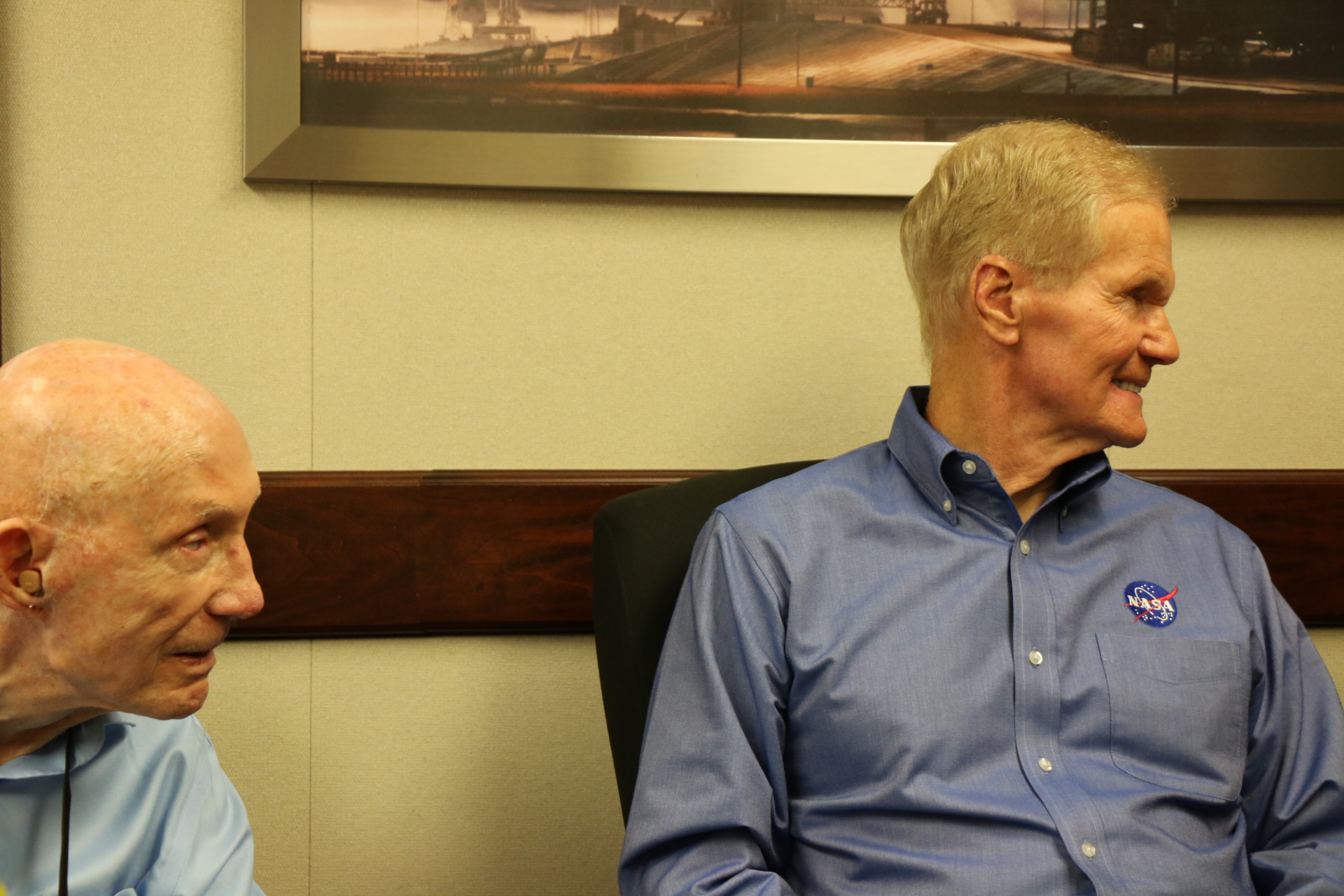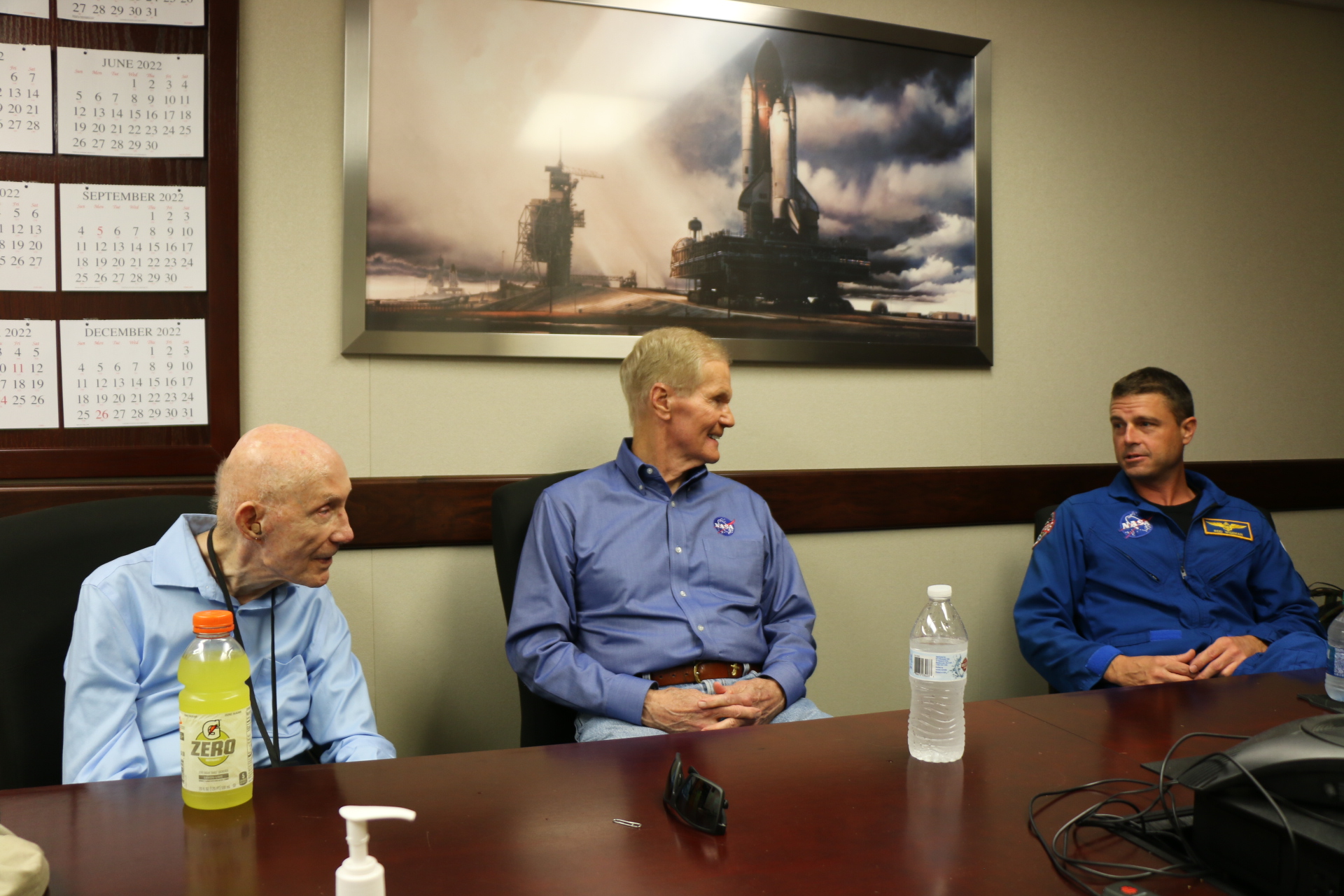Apollo-Soyuz astronaut reflects on changing U.S.-Russia relations in space
Gen. Thomas Stafford, the Apollo-Soyuz commander who flew on Apollo 10 and Gemini missions, weighs in on cooperation in space.

Almost 50 years ago, in the midst of the Cold War, American astronauts flew to space alongside cosmonauts as part of NASA's first attempt to forge a partnership between the U.S. and Russia in space.
U.S. Air Force Gen. Thomas P. Stafford (ret.), a former astronaut who flew on NASA's Gemini 6A and Gemini 9A missions as well as Apollo 10, which took him close to the moon's surface in May 1969, commanded the American crew on that pioneering 1975 flight, known as the Apollo-Soyuz Test Project. He spoke out recently, reflecting on that time and what it meant.
The Apollo-Soyuz Test Project, which saw two Cold War superpowers come together for a space mission, was the first international human spaceflight in history, and it laid the initial groundwork for collaboration in space that has endured for decades.
"We didn't have any specific instructions," Stafford told Space.com in an interview during NASA's Artemis 1 rollout on March 17 at the agency's Kennedy Space Center in Florida.
Related: What does the Ukraine invasion mean for US-Russian partnership in space?

Very matter-of-factly, Stafford, now 91, said that when it came to Apollo-Soyuz, the NASA astronauts "just approached it in a very professional manner." And, while Stafford didn't reveal much of what was said between the astronauts and cosmonauts during the nine-day mission, he said simply: "It went great."
The mission, which is often seen as the end of the Cold War "space race" between the U.S. and the Soviet Union that pushed the competition to put boots on the moon first, also took place as theVietnam War was winding down. Stafford flew alongside fellow NASA astronauts Deke Slayton and Vance D. Brand as well as Russian cosmonauts Alexei Leonov, who commanded the Soyuz crew, and Valeri Kubasov.
Get the Space.com Newsletter
Breaking space news, the latest updates on rocket launches, skywatching events and more!
Stafford didn't reveal too much about what went on between the crewmembers of this one-off test flight. But Apollo-Soyuz sparked a lifelong relationship among its crewmembers, NASA Administrator Bill Nelson revealed in the same conversation with Space.com.
Related: Russia's invasion of Ukraine in satellite photos
Live updates: Ukraine invasion's impacts on space exploration

An enduring relationship
"Two general officers rendezvoused and docked in space in the middle of the Cold War," Nelson said. "That crew lived together in space for nine days. And, as a result of that, it broke the ice. So much so that, years later, Alexei arranged for Tom to be able to adopt two Russian boys who have now graduated from college."
Nelson added that Leonov and Stafford formed such a strong bond that "when Alexei died a couple of years ago, Tom gave the eulogy at his funeral. So I think that speaks volumes as to what was started in 1975."
NASA astronaut G. Reid Wiseman, the current head of NASA's astronaut office who last flew to space in May 2014 with the Expedition 40/41 mission to the International Space Station, shared how he has been supported by the U.S.-Russian partnership as well.
"Something that's important to highlight just from my own personal perspective is that the day before I launched — Leonov knew I was a rookie, and he came, put his arm around me, and he was like, 'Here's what you're going to feel. And here's what you're going to need to do,'" Wiseman told Space.com.
"It was a very short conversation," he said, adding that in 2014 both Stafford and Leonov were "still doing that with every American that flew [and] every cosmonaut that flew. So that relationship that that got built in the '70s, it was and is strong all the way to today's need for seeing that."
Nelson added that Robert "Hoot" Gibson, who commanded the space shuttle flight that Nelson flew on as a congressman in 1986, STS 61-C, also had a hand in forging U.S./Russia relations in space. Gibson commanded STS-71, the 1995 space shuttle mission that was the first to dock with the Russia's Mir space station. "We went through that experience, and then we went on to that experience of building the space station together," Nelson said.
But Stafford's work to foster international collaboration in space didn't end with Apollo-Soyuz. While missions like STS-71 saw the shuttle program come together with Mir, the most significant international partnership in space to date, for any country, is with the International Space Station. The space station partnership includes the U.S., Russia, the European Space Agency, the Canadian Space Agency as well as the Japan Aerospace Exploration Agency.
But as Stafford told Space.com, despite the success of Apollo-Soyuz, the International Space Station was initially not the easiest concept to sell.
Selling the space station
Stafford said he and his colleagues had some space station conversations in the early 1990s. The discussions centered on how the International Space Station "was an engineering marvel. But it was a very fragile vehicle," Stafford told Space.com.
"From the cosmonaut side, I knew they had some rough, tough times on reentry, rolled down a mountainside," he said, implying that Russian vehicles such as the venerable Soyuz spacecraft were quite sturdy.
In 1992, Stafford and his colleagues had a breakfast meeting in the office of NASA Administrator Daniel S. Goldin, just days after Goldin started the job. During the meeting, it was said that "we need to have Rusia on board" with any space station project that NASA embarks upon, Stafford said — most importantly, "because we need a crew rescue vehicle."
"The Soyuz is simple, but it's very rugged," he added.
This was just a few years after the Challenger space shuttle tragedy rocked the world, reminding everyone of the serious risks that come with human spaceflight.
"The question is not if, but when we lose the next one [and] we have people stuck up there. We need to be able to bring it back or, say, bring it back in a hurry on land or water. And the Soyuz can do it. It's very simple," Stafford said of the thinking at the time.
In speaking with Goldin, "I told him, people at NASA will fight you on this," Stafford said. Still, despite pushback, the partnership came to be and has endured since.
Working through a tumultuous future
Stafford's reflections on his time during Apollo-Soyuz come as the space relationship between the U.S. and Russia is in an especially tenuous state. The U.S., among other countries, has condemned Russia's ongoing invasion of Ukraine and imposed economic sanctions as punishment.
The invasion, which began on Feb. 24, has sparked questions over whether Russia's partnerships will continue with the U.S. and other countries on the International Space Station program, as well as other collaborative efforts like ride-sharing on Russia's Soyuz spacecraft. NASA astronaut Mark Vande Hei returned to Earth aboard a Russian Soyuz capsule with two cosmonauts on March 30, but it's unclear at the moment how NASA astronauts will use the Soyuz after that trip.
NASA officials have stated firmly that the agency plans to continue the space station partnership until the station retires, which is expected to take place around the end of this decade.
"Despite all of the problems on terra firma, we are keeping that professional relationship, because these guys and the cosmonauts are really professional. Mission Control Houston and Mission Control Moscow are professionals. That's what's going on," Nelson said during the conversation.
Email Chelsea Gohd at cgohd@space.com or follow her on Twitter @chelsea_gohd. Follow us on Twitter @Spacedotcom and on Facebook.
Join our Space Forums to keep talking space on the latest missions, night sky and more! And if you have a news tip, correction or comment, let us know at: community@space.com.

Chelsea “Foxanne” Gohd joined Space.com in 2018 and is now a Senior Writer, writing about everything from climate change to planetary science and human spaceflight in both articles and on-camera in videos. With a degree in Public Health and biological sciences, Chelsea has written and worked for institutions including the American Museum of Natural History, Scientific American, Discover Magazine Blog, Astronomy Magazine and Live Science. When not writing, editing or filming something space-y, Chelsea "Foxanne" Gohd is writing music and performing as Foxanne, even launching a song to space in 2021 with Inspiration4. You can follow her on Twitter @chelsea_gohd and @foxannemusic.









